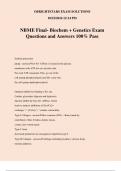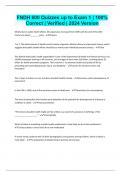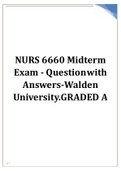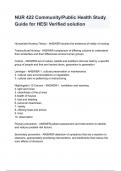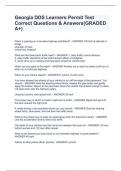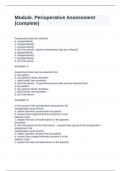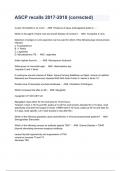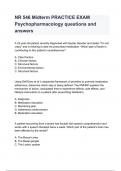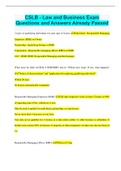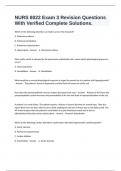Exam (elaborations)
NBME Final- Biochem + Genetics Exam Questions and Answers 100% Pass
- Course
- Institution
NBME Final- Biochem + Genetics Exam Questions and Answers 100% Pass Sodium-potassium pump - answerNa+-K+ ATPase is located in the plasma membrane with ATP site on cytosolic side. For each ATP consumed, 3Na+ go out of the cell (pump phosphorylated) and 2K+ come into the cell (pump dephosphory...
[Show more]
